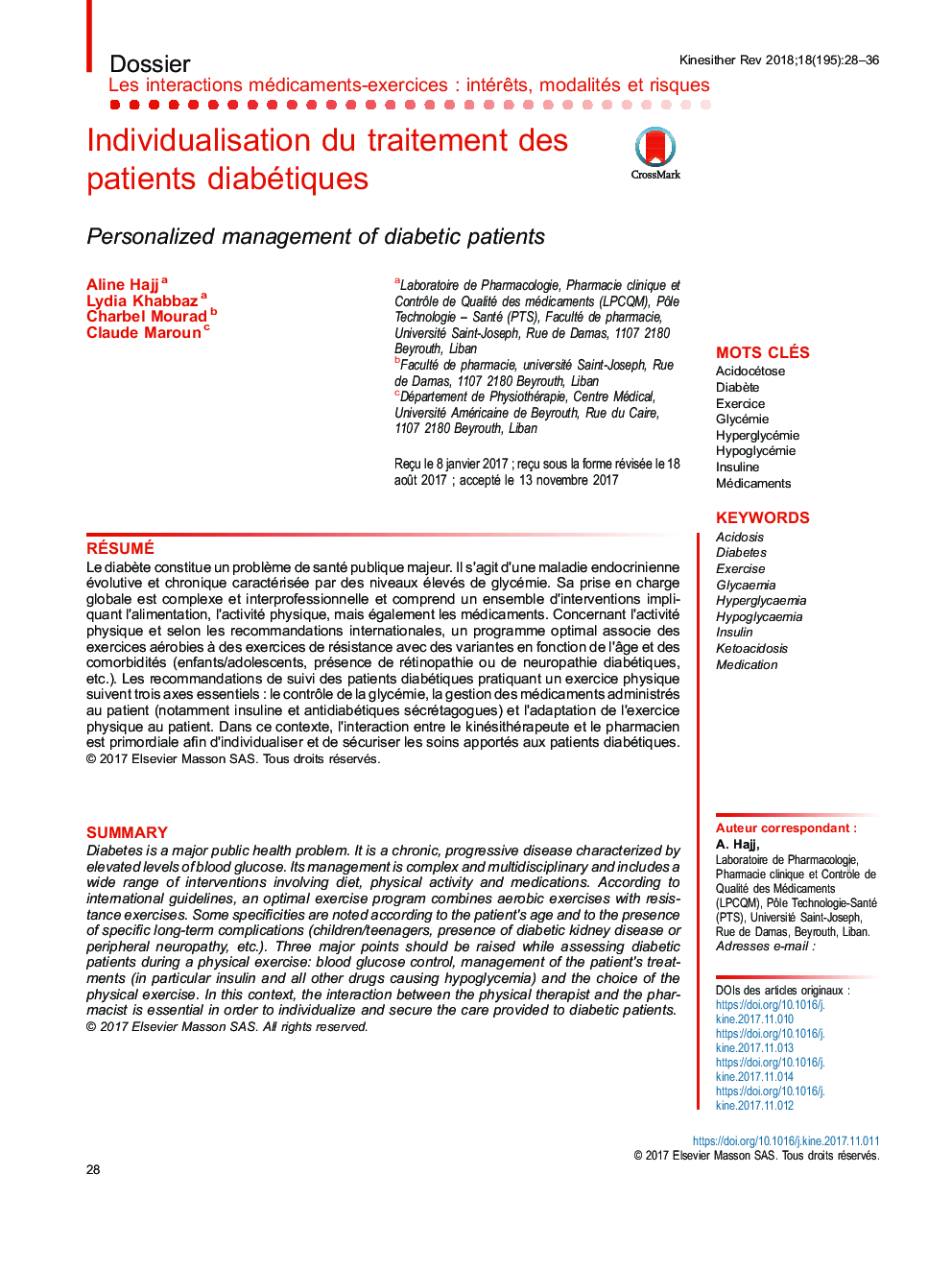| Article ID | Journal | Published Year | Pages | File Type |
|---|---|---|---|---|
| 8560815 | Kinésithérapie, la Revue | 2018 | 9 Pages |
Abstract
Diabetes is a major public health problem. It is a chronic, progressive disease characterized by elevated levels of blood glucose. Its management is complex and multidisciplinary and includes a wide range of interventions involving diet, physical activity and medications. According to international guidelines, an optimal exercise program combines aerobic exercises with resistance exercises. Some specificities are noted according to the patient's age and to the presence of specific long-term complications (children/teenagers, presence of diabetic kidney disease or peripheral neuropathy, etc.). Three major points should be raised while assessing diabetic patients during a physical exercise: blood glucose control, management of the patient's treatments (in particular insulin and all other drugs causing hypoglycemia) and the choice of the physical exercise. In this context, the interaction between the physical therapist and the pharmacist is essential in order to individualize and secure the care provided to diabetic patients.
Keywords
Related Topics
Health Sciences
Medicine and Dentistry
Orthopedics, Sports Medicine and Rehabilitation
Authors
Aline Hajj, Lydia Khabbaz, Charbel Mourad, Claude Maroun,
